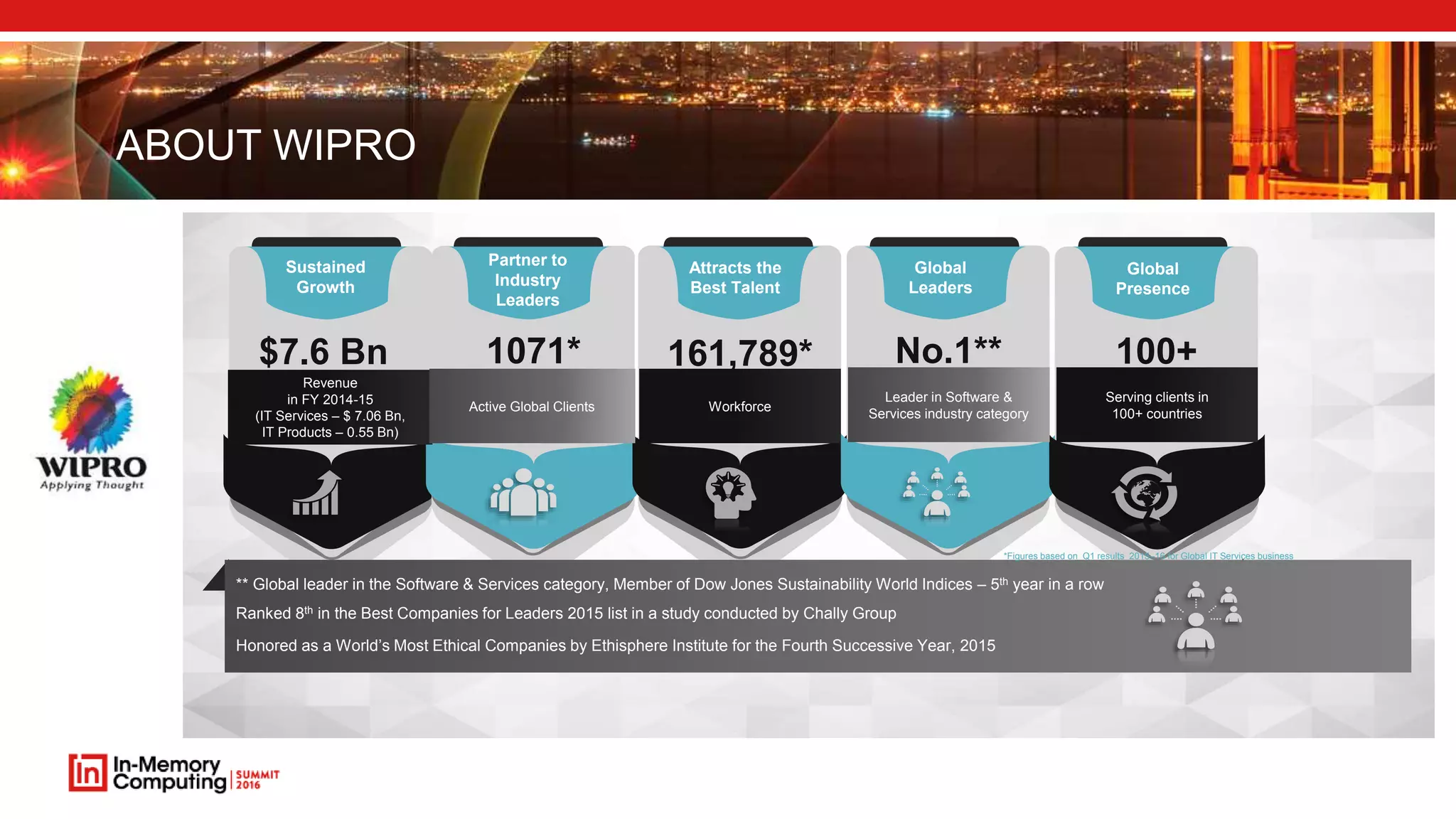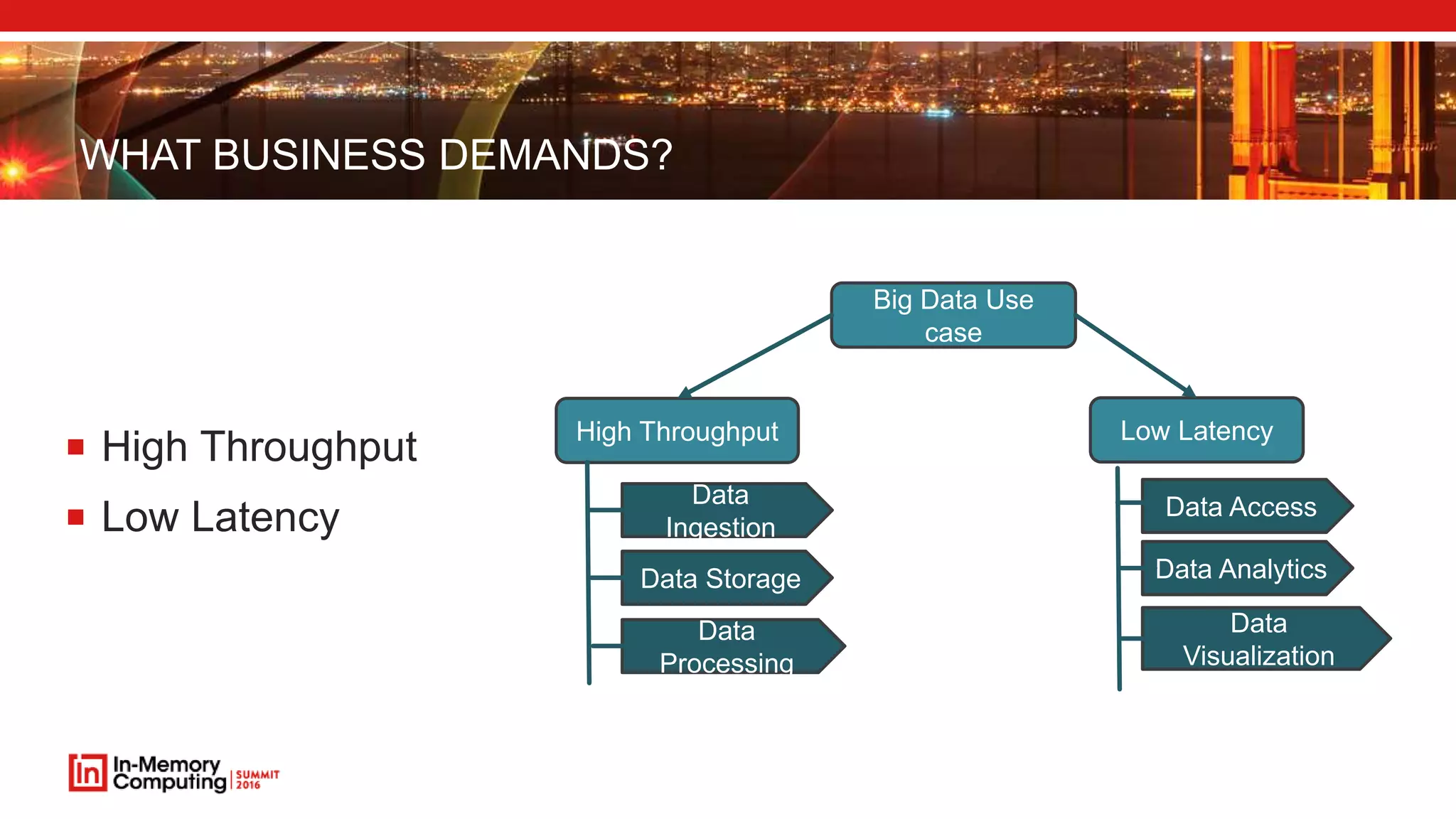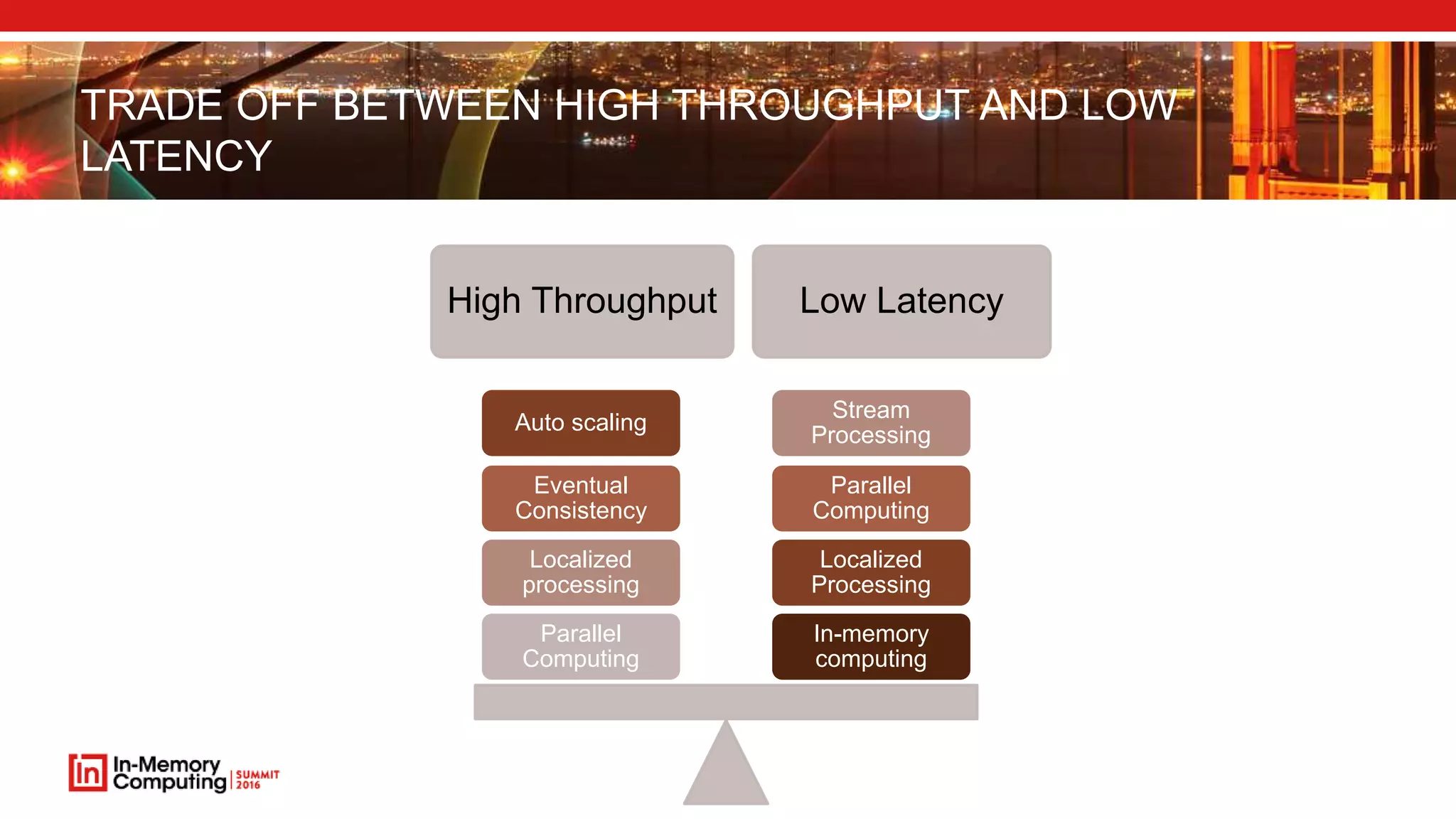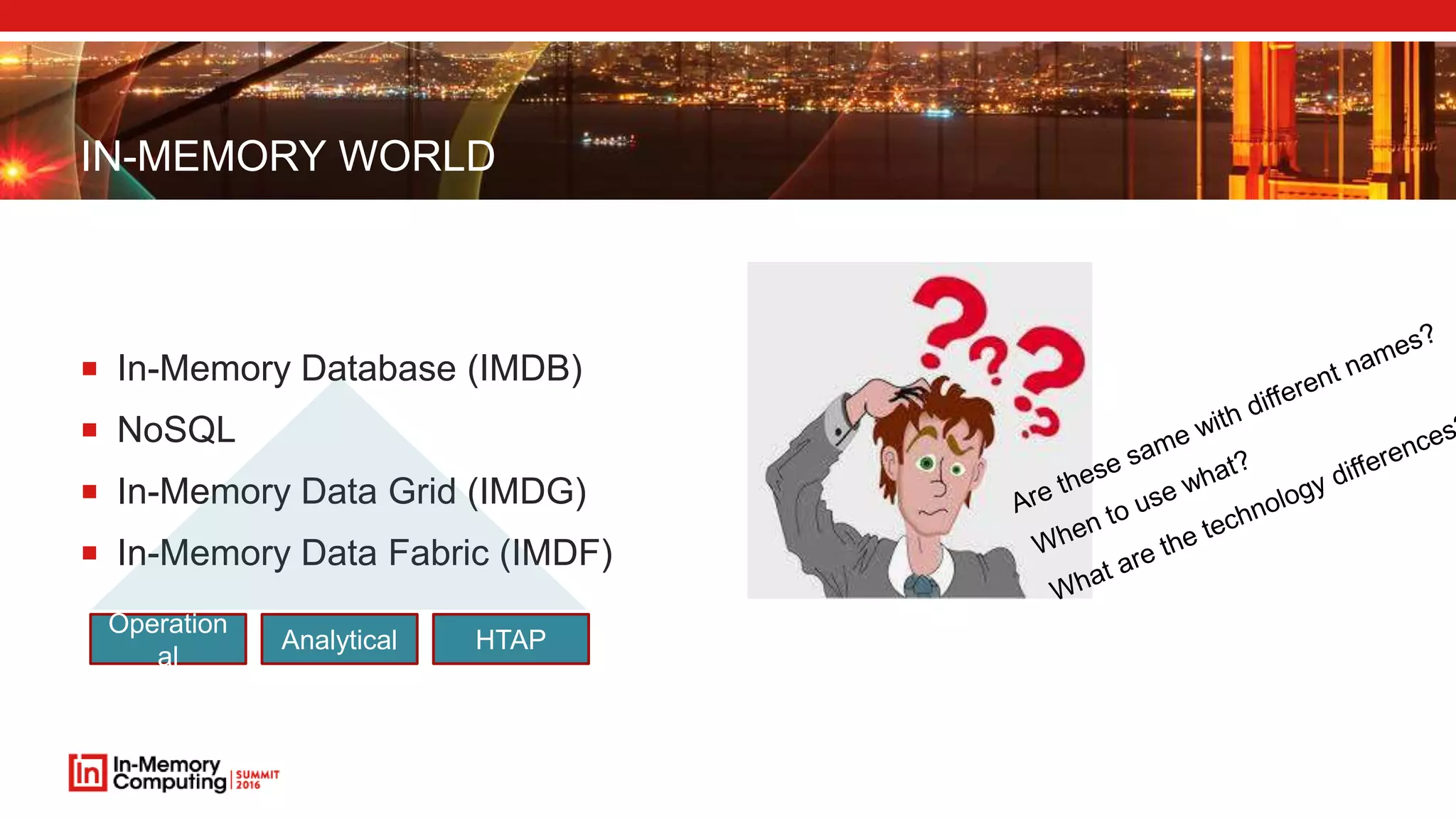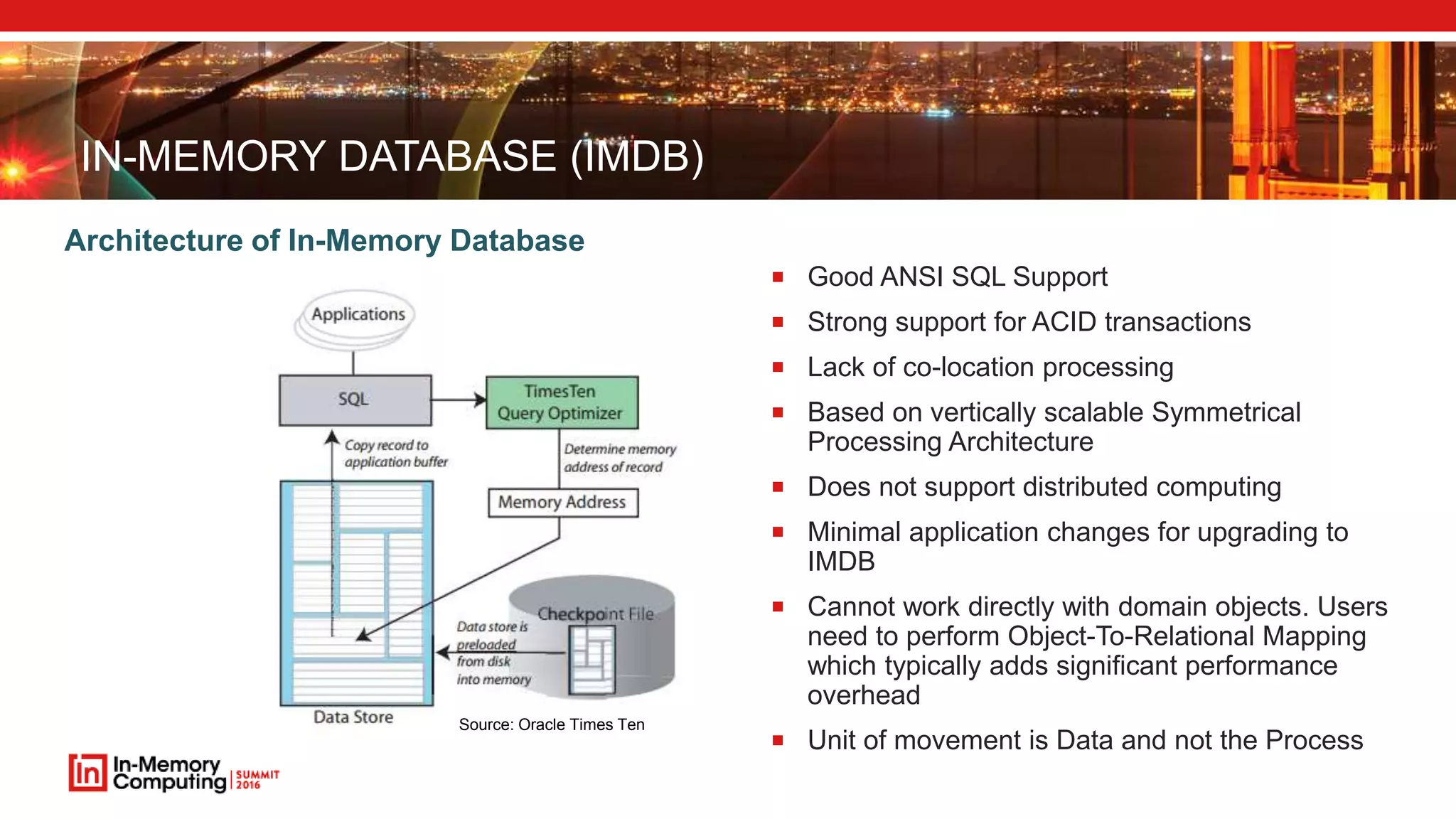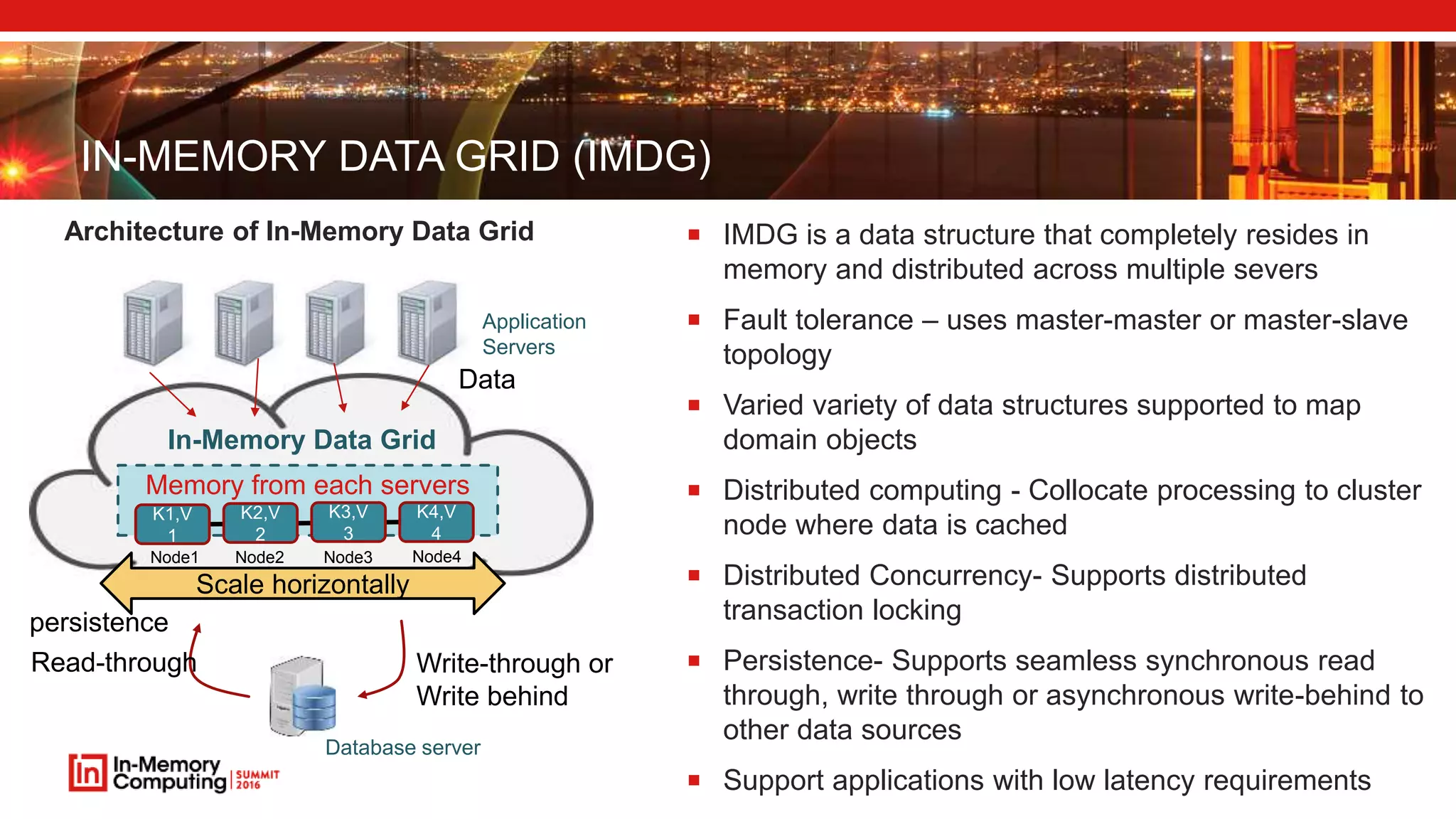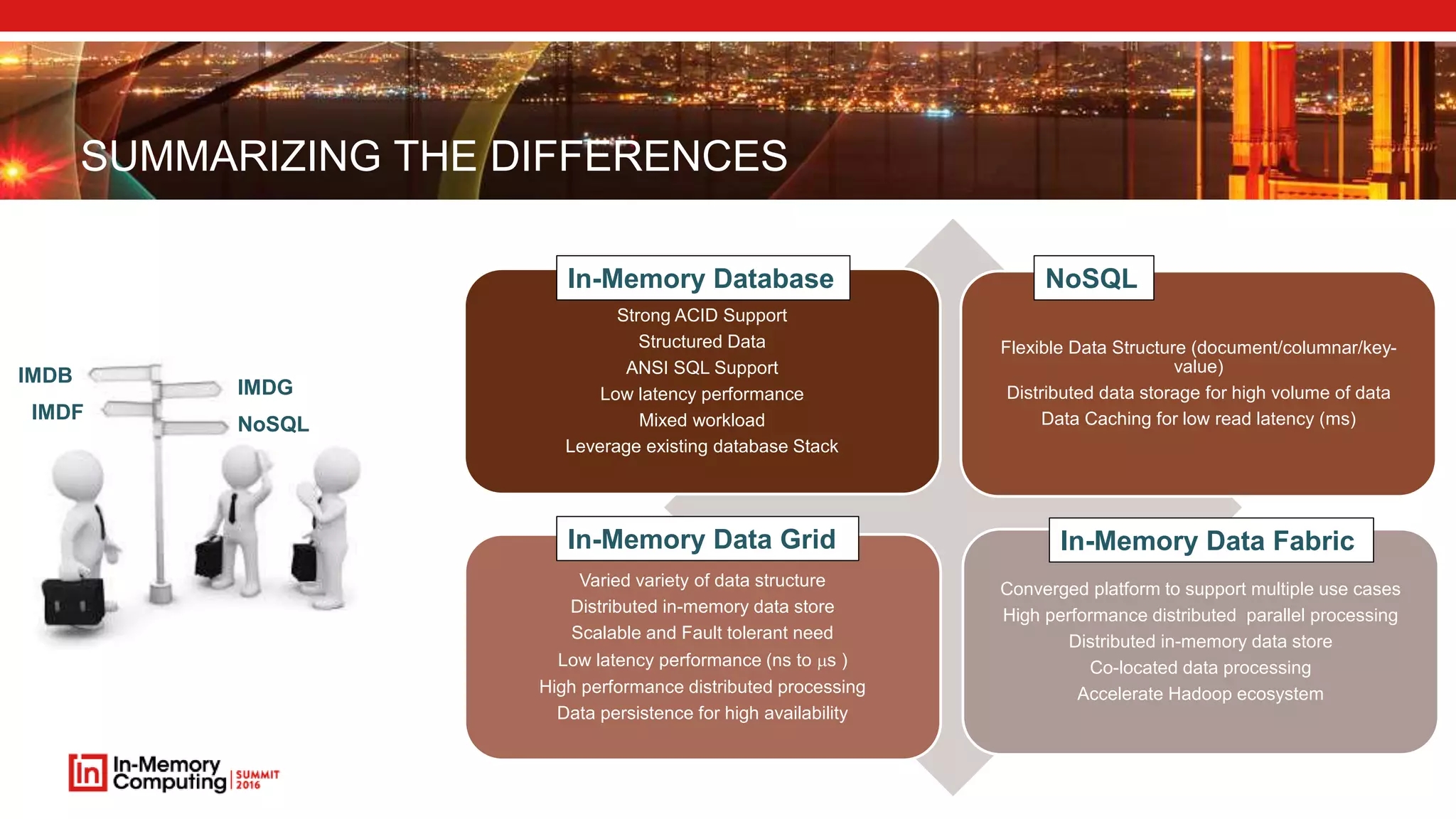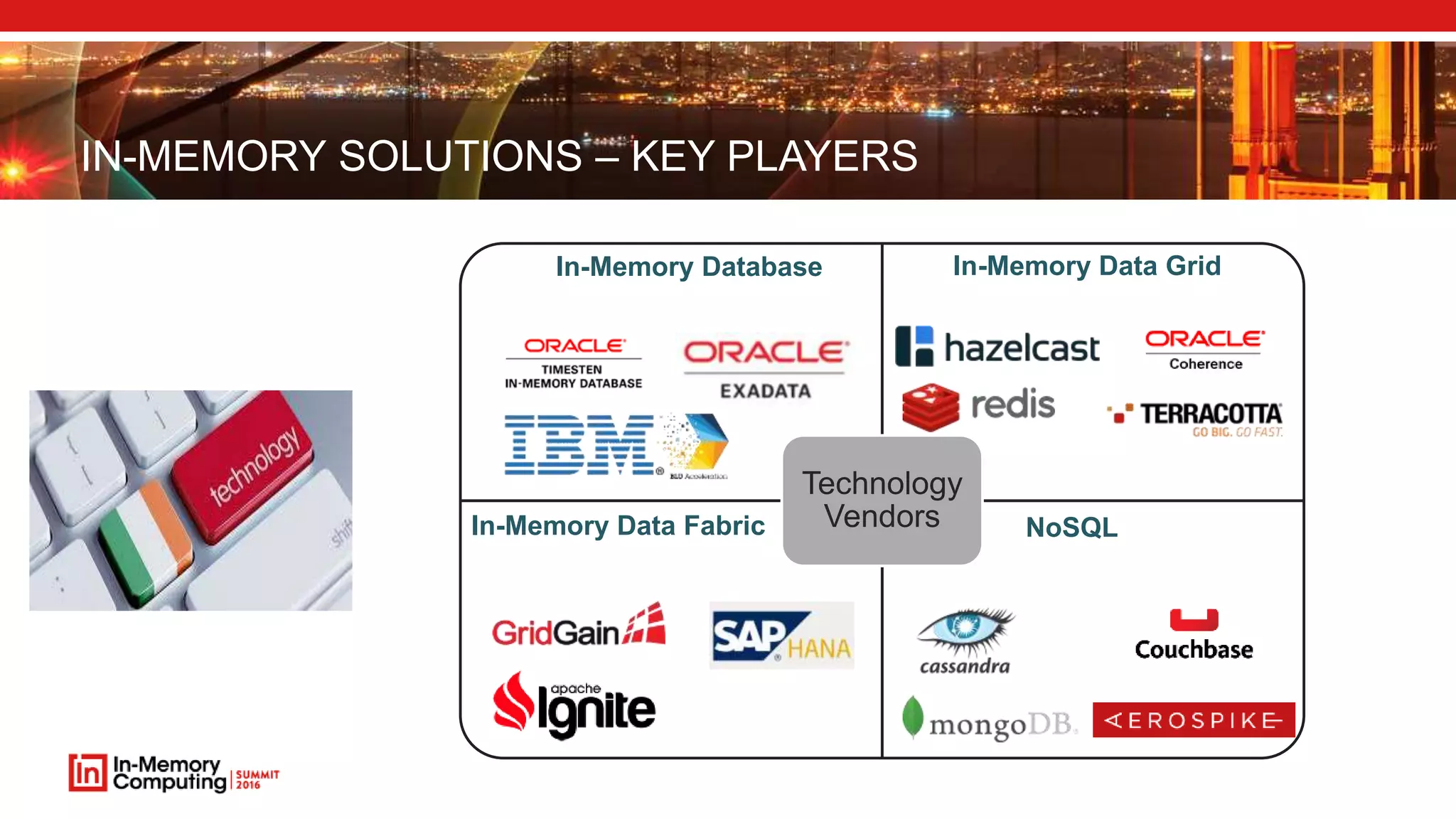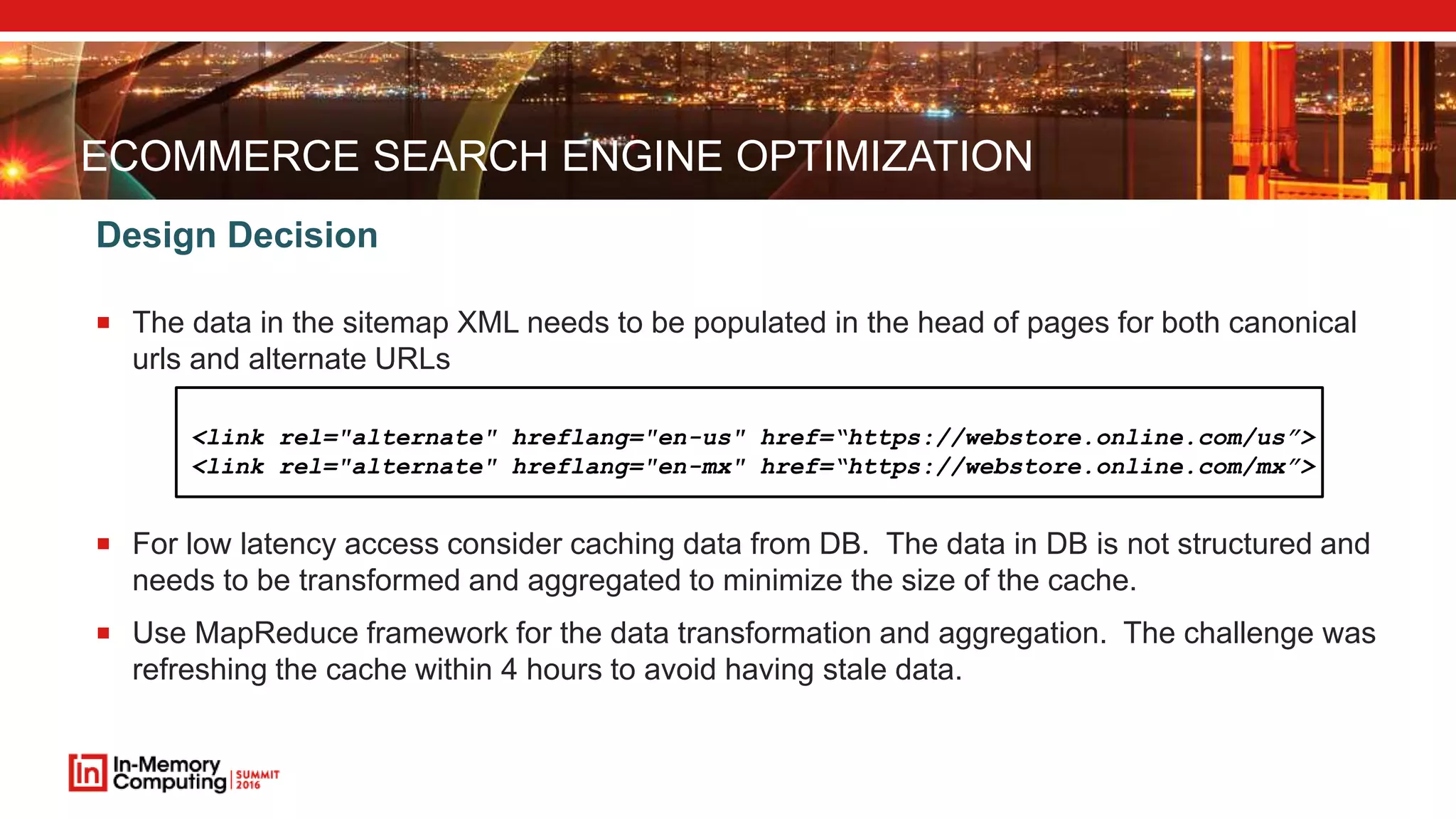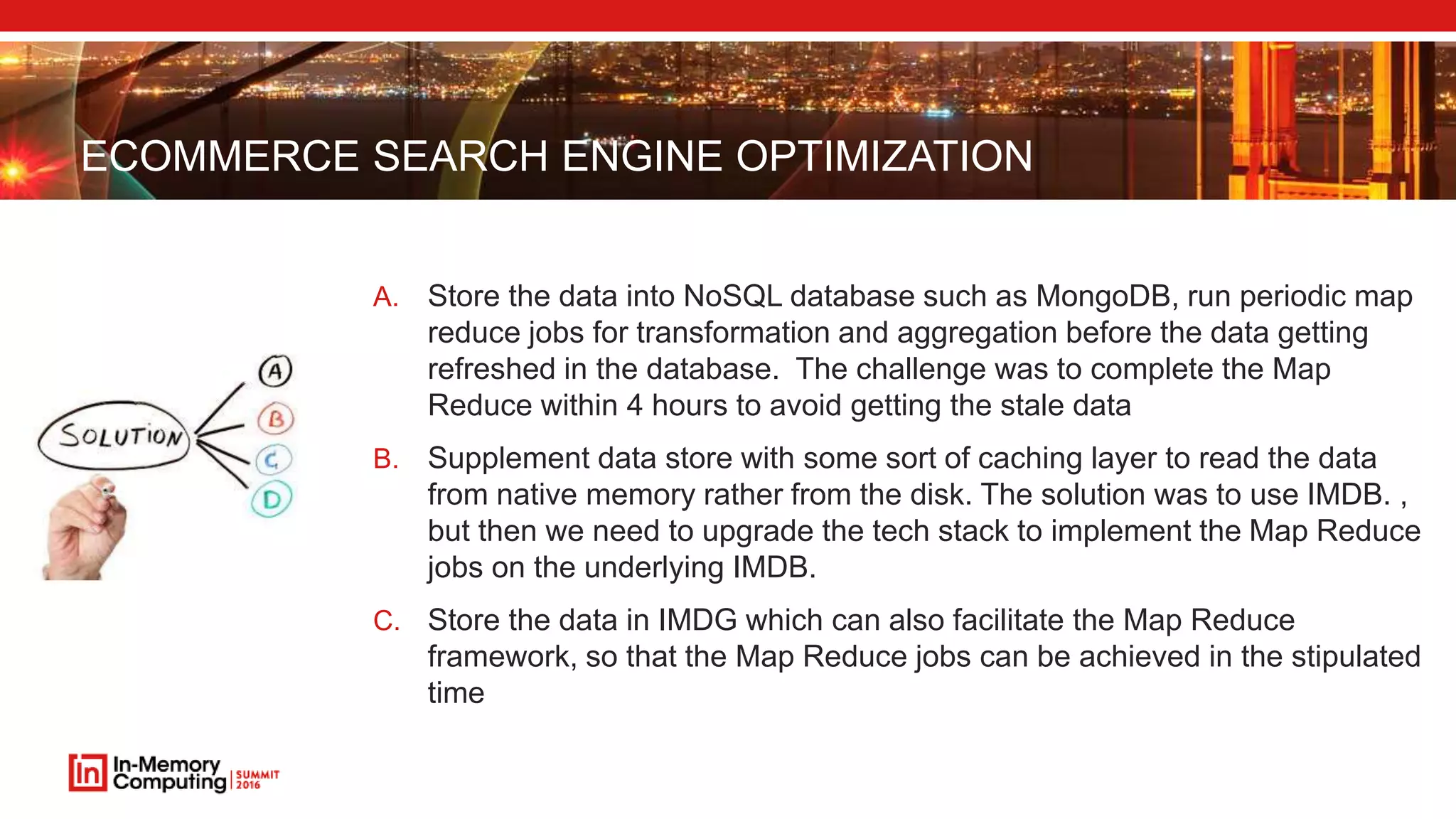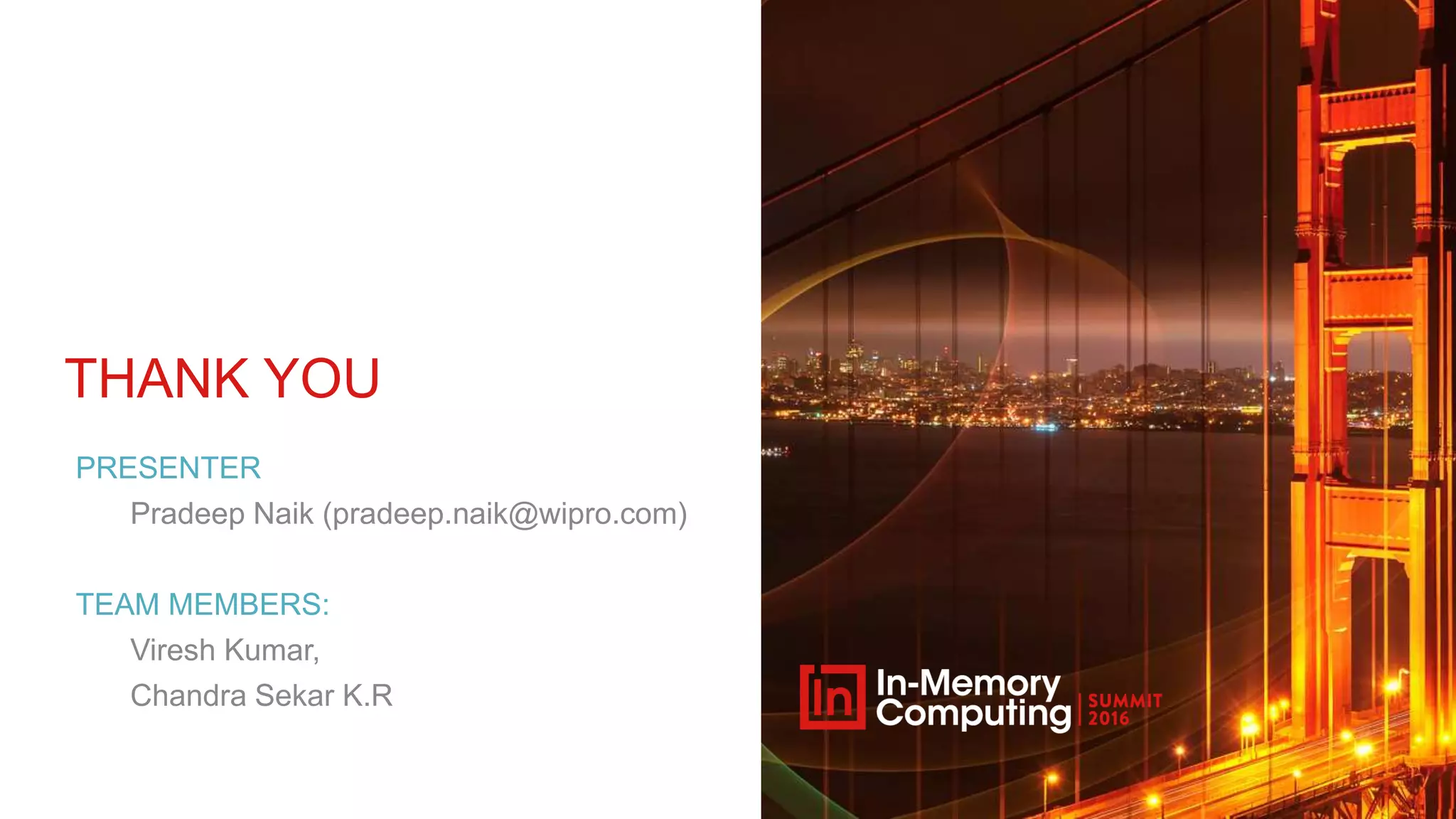The document discusses in-memory technology, including in-memory databases, data grids, and data fabrics, highlighting their architectural differences and applications in high-throughput and low-latency scenarios. It emphasizes the strengths and limitations of various solutions while offering insights into the implementation of an e-commerce search engine optimization project using these technologies. Pradeep Naik, a principal consultant at Wipro Technologies, presents these concepts with a focus on performance and scalability.


